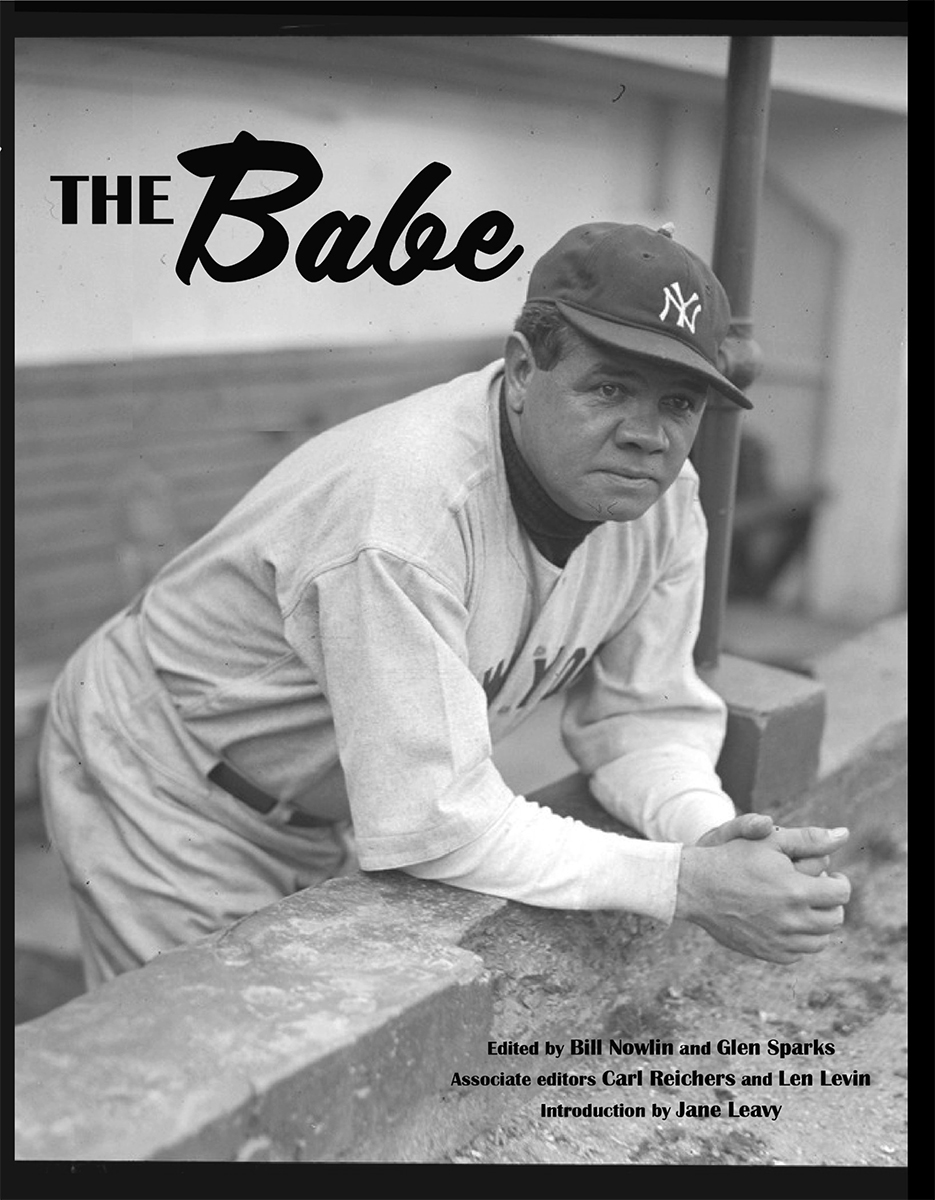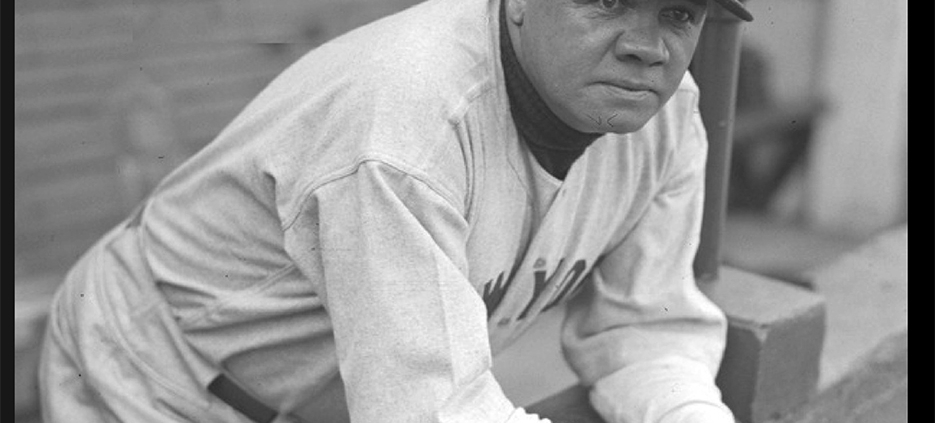Introduction: The Babe (2019)
This article was written by Jane Leavy
This article was published in The Babe (2019)

I reached Michael Haupert in his car as he was driving home to Wisconsin from his annual trip to Cooperstown. My email in-box tells me the date was May 22, 2015. Tom Shieber, senior curator at the Hall of Fame, had told me Mike, a professor of economics at the University of Wisconsin-La Crosse, was the go-to guy on Babe Ruth, the Yankees, and the economic underpinnings of the Evil Empire.
Fifteen years earlier, on a previous research trip to Cooperstown, Mike had discovered a motherlode of Yankee financial data in unopened boxes in a climate-controlled storage room at the Hall of Fame, where they had languished since 1973 when a team employee offered them to the head librarian in advance of the renovation of Yankee Stadium. The boxes contained 24 years of accounting books and team ledgers from Jacob Ruppert’s tenure as owner. The current owner, George M. Steinbrenner III, had deemed them superfluous.
Mike, executive director of the Economic History Association, and beleaguered Cubs fan, quickly understood their value: they offered a peek inside the inner workings of the most successful professional sports team in American history, a heaping portion of the forbidden financial fruit that baseball ownership had managed so effectively to keep to themselves through decades of hegemony. The closely kept figures showed how much they made, and how little they spent on player salaries; how much they charged their players for use of the pinstriped uniforms and how much they paid private investigators to follow them out of uniform. They revealed how much Ruppert agreed to pay Red Sox owner Harry Frazee for Babe Ruth in December 1919—$100,000, not the $125,000 reported by the New York Times at the time of the sale—and how much they profited from the acquisition. That would be a whopping $12.6 million in net profits adjusted for inflation. Or $20 for each dollar they had invested in the Babe.
Mike had been dissecting the numbers ever since, creating with his economist’s regressions a transformative accounting of the economics of baseball. But he only had half the story. The owners’ side.
What he lacked, I had found a month earlier in a report put together by Ruth’s agent, the indefatigable Christy Walsh, the original “Jerry Maguire,” whose efforts on Ruth’s behalf and revolutionary plan for marketing and promoting him as an entertainer had long since been lost to history. “FINAL REPORT For Mr. GEORGE H. ‘BABE’ RUTH From CHRISTY WALSH 1921-1938.”
Sequestered in a faded lime green binder, in the home of Ruth’s granddaughter Linda Ruth Tosetti, the pages revealed every dime the Babe earned for barnstorming, vaudeville, endorsements, personal appearances, movies, and radio broadcasts arranged during 14 years of Christy Walsh Management. The total of $447,392.07—what Walsh called “by product money” equals $124,603,370 in 2016 dollars. The document was proof positive that my operating theory—and the basis for my book—was correct. Ruth and Walsh had created a financial template for every millionaire and multimillionaire celebrity athlete who succeeded him—in time and dollars. They had created a blueprint for how to be wealthy and famous in a new America.
But absent what Mike knew, I couldn’t establish the fiscal magnitude of “The Big Fella.” Couldn’t demonstrate how he began to rectify the imbalance of financial power between players and owners.
I reached Mike by phone that fine May day in his car somewhere outside Cleveland. We talked all the way through Indiana and into Chicago.
He got off the line only because he had to negotiate the traffic en route to Wrigley Field.
When he hung up, I knew for sure—and for the first time—that I could write the book I had set out to create. Needless to say, his chapter “Sale of the Century: The Yankees Bought Babe Ruth for Nothing” in this volume The Babe was the first I read and most enjoyed. He didn’t confess the deal he had made with the Hall of Fame until he came to visit me this summer: they had given him a microfilm copy of the Ruppert files in exchange for a promise that he would share the information with researchers like me. He had to talk to me.
“Yeah, but not across state lines,” Mike pointed out.
His discovery in the climate-controlled vault in Cooperstown—and my discovery of Mike—is an object lesson in writing history. What we think we know, we often don’t. What we think is certain, is not. What we think is the complete story hasn’t been written.
Within these pages, I found anecdotes I had not heard, details I lacked the space to include, stories I couldn’t get. Pete Palmer’s analytic assessment of Ruth’s greatness as a pitcher comes to mind. Robert Fitts’ account of Ruth’s triumphant tour of Japan in the fall of 1934, at the end of his tenure with the Yankees, includes this lovely, salient detail on the fascination with all things Bambino: “One old man brought a pair of high-powered binoculars, amusing himself and neighboring fans by focusing on the Bambino’s famous broad nose, making his nostrils fill the lens.”
Steve Smith’s account of “The Babe’s Final Personal Appearance” in Minneapolis in the summer of 1948, based on a story in the Minneapolis Star and Tribune that I hadn’t seen, touched me as much as the less detailed wire service story I relied on in my book.
In his last public appearance, carried on the radio, which was a figment of scientific imagination when Ruth was a Boston Red Sox rookie in 1914, he was interviewed by an 11-year-old boy named Johnny Ross, dubbed Minneapolis’s “biggest sports enthusiast.” Johnny was blind. Ruth, who would be dead two months later from nasopharyngeal cancer, could barely talk.
Johnny: How are you, Babe?
Babe: I don’t feel so good. I have a very bad throat and my head aches.
Johnny: Who’s your favorite ball team?
Babe: I think I’ll have to stick with the Yanks. They’ll win the American League pennant.
Johnny: I know they say the time you called your homer was your biggest thrill, but was it?
Babe: Johnny, I think the time I pitched 29 consecutives innings without giving up a run.
Johnny: Would you sooner pitch or play the outfield?
Babe: I’d like to be in there every day. That’s how much I like to play.
With that Johnny, who was sitting in the Babe’s lap, ran out of things to ask. Ruth put his arm around the boy and said, “I think both of us are out of words, Johnny.”
Spent, he canceled the remainder of his tour and went home, his place in the history books more secure than the life he still clung to.
History isn’t finite–at least not where Ruth is concerned. The Babe always has more to give. He still generates more interest, more material, and more astonishment than anyone else who ever played the game. And that may be the best definition of his greatness.
— August 21, 2019
JANE LEAVY is the author of three New York Times bestsellers: The Big Fella: Babe Ruth and the World He Created; The Last Boy: Mickey Mantle and the End of America’s Childhood; and Sandy Koufax: A Lefty’s Legacy. In 2019, The Big Fella earned her SABR’s Seymour Medal, presented annually to the best book of baseball history or biography. She was also a finalist for the National Book Critics Circle Award for Biography and the PEN/ ESPN Award for Literary Sports Writing. A former staff writer for the Washington Post, she grew up on Long Island where she pitched briefly and poorly in little league for the Blue Jays of Roslyn Heights. She lives in Washington, DC and Truro, Massachusetts.
- Read more: Find all essays from The Babe in the SABR Research Collection online
- Games Project: Find articles on Babe Ruth’s greatest games at the SABR Games Project
- E-book: Click here to download the e-book version of The Babe for free from the SABR Store. Available in PDF, Kindle/MOBI and EPUB formats.
- Paperback: Get a 50% discount on The Babe paperback edition from the SABR Store ($17.99 includes shipping/tax; delivery via Kindle Direct Publishing can take up to 4-6 weeks.)


